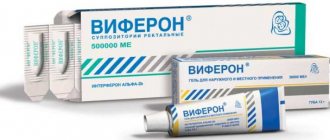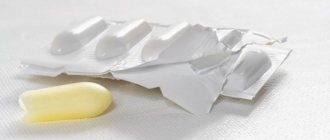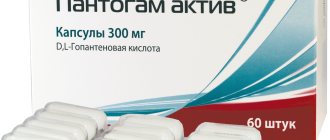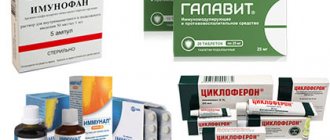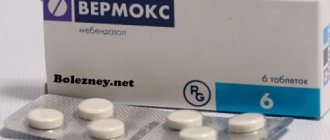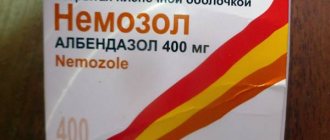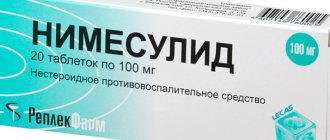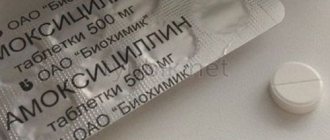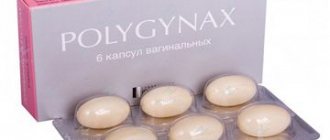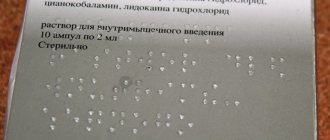Longidaza for prostatitis: mechanism of action
This drug belongs to the group of medications derived from hyaluronidase and has long-acting enzymatic proteolytic activity.
In addition, it has the following healing effects:
- Chelating. Due to its biochemical activity, Longidaza reacts with damaged cells and toxins (creates chelate complexes), replacing their particles, thereby destroying unnecessary cells and binding harmful substances.
- Antioxidant. Takes part in suppressing the process of lipid peroxidation.
- Immunomodulatory. Stimulates the body to produce interferons and biologically active protective substances (lysozyme, macrophages and others).
- Anti-inflammatory. Suppresses the source of infection, reduces the aggressive effect of inflammatory mediators.
A special property of the drug is the ability to split cell membranes using a proteolytic component. This way the medication reaches all tissues of the body without much effort, including the prostate parenchyma. Penetrating into the male organ, the drug exerts its effect mainly on the connective tissue, and not on the causative agent of the disease.
That is why Longidaza for prostatitis should be used as an auxiliary therapy, and not as a basic medicine. The drug showed the most effective results in the treatment of chronic inflammation of the prostate gland.
Since in this case there is hypertrophy of the organ with the formation of new connective tissue, which replaces the normal structure of the prostate, the enzymatic effect on pathological areas of fibrosis significantly improves and accelerates the process of the main treatment. Adhesions and accumulations of fibrin are eliminated, the patency of blood vessels and the urinary tract is improved.
Course of administration and dosage
After completing the course of medication use by the patient, the following results are observed:
- Regression of swelling, reduction of pain.
- Normalization of the process of urination and ejaculation.
- Return of erection.
- Reduction in gland size due to proteolysis.
- General improvement in the patient's condition.
Longidaza for prostatitis is a necessary and effective drug that currently has no analogues.
New in the prevention of chronic prostatitis! Clinical testing was carried out in a hospital setting at a sanatorium in Pyatigorsk in 2013. Men aged 38 to 73 years, diagnosed with chronic prostatitis, took part in clinical trials for 1 month.
Read more…
The medication is available in the form of suppositories of 10 per package. As with any other suppositories, before insertion into the anus it is necessary to empty the intestines naturally or with an enema, and after use, lie on your stomach for another 20-30 minutes to prevent dislocation of the product. The special healing effect is due to the anatomical proximity of the prostate and rectum.
The course of treatment is 10-15 injections. Suppositories should be used 1 time per day before bedtime every 24 hours, you should skip one day between administrations. After the end of such therapy, if there is no result, a similar algorithm of use can be repeated no earlier than 2 months.
Longidaza candles
One suppository contains an amount of active substance equal to an ampoule. The dosage is also determined by the doctor individually. The procedure is usually carried out once every 1-3 days in accordance with the instructions. When taking the medicine rectally, hygiene should be observed. To better retain the medication, the procedure is carried out after bowel movements, preferably at night. The candle is inserted with the sharp end inwards, after which the patient is recommended to remain in a supine position for at least half an hour.
The convenience of the suppository form lies in the ease of independent use and the possibility of carrying out the procedure at home. Thus, patients taking Longidaza in the form of suppositories can quickly relieve pain and feel relief within half an hour after taking it.
Adverse reactions and contraindications
Longidaza is used most often for chronic prostatitis and the issue of adverse events caused by the drug is very acute due to the duration of such therapy.
However, the drug is safe for the body and causes minimal side effects:
- Nausea, vomiting;
- Dizziness, general weakness;
- Allergic rash like urticaria.
It is also worth noting that the medicine interacts with other drugs. It is not recommended to use Longidaza while taking salicylates (Aspirin), hormonal medications (Cortisone, ACTH), antihistamines (Claritin, Erius). With this combination, the therapeutic effectiveness of both groups of drugs is reduced.
The main contraindications for the use of a proteolytic drug are:
- Individual intolerance;
- The presence of malignant neoplasms in the body;
- Severe renal failure (approximately 90% of the active substance is excreted by the kidneys);
- Age up to 12 years;
- Pulmonary hemorrhages.
Longidaza is an excellent addition to a wide range of basic medications that are used to treat inflammation of the prostate gland. Acute, chronic, congestive, hyperplastic or calculous prostatitis is much easier if you take this remedy. We must always remember that the recovery of each patient should, first of all, be individual and comprehensive, using the entire arsenal of healing agents.
stopprostatit.ru
How effective is Longidaza for prostatitis? Chronic prostatitis is a common, incompletely studied and difficult to treat disease. Most often it occurs among middle-aged men and is often combined with prostate adenoma. There are bacterial and non-bacterial chronic prostatitis. The first type is classified as an infectious inflammatory disease with possible autoimmune disorders.
As for the mechanism of development of non-bacterial prostatitis, there is no exact data on this yet. First, an infectious-inflammatory process may occur, which is further supported by autoimmune reactions.
Prostatitis causes many problems:
- Diffuse changes in the prostate;
- Poor blood circulation in the gland;
- Changes in cell metabolism.
Patients suffering from this disease complain of painful urination, constant urge to go to the toilet, decreased libido and sexual impotence.
Treatment of prostatitis should focus primarily on eliminating the infection, normalizing the immune system, reducing inflammation and restoring prostate function.
To stop the inflammatory process and prevent the replacement of healthy tissue with fibrous tissue, the enzyme hyaluronidase is widely used. One of the drugs containing this enzyme as the main active ingredient is Longidaza.
Pharmacodynamics and pharmacokinetics
When administered parenterally, the active substance quickly enters the systemic circulation, where its maximum concentration is reached after 20–25 minutes. The substance is quickly distributed in the body, its bioavailability is at least 90%. The active substance is able to penetrate into all tissues and organs.
Hyaluronidase undergoes hydrolysis in the body, and the carrier also decomposes into low molecular weight compounds, which are excreted in two phases through the kidneys. In the first day, approximately 45–50% is excreted by the kidneys, and approximately 3% by the intestines. After this, the elimination process slows down. The drug is completely eliminated from the body after 4–5 days.
When Longidase is administered rectally, its active substance is quickly absorbed into the bloodstream. Its maximum plasma concentration is observed after approximately 1 hour. When used rectally or vaginally, bioavailability is 70%. The half-life can range from 42 to 84 hours.
General information about the drug
The product is based on a combination of hyaluronidase and polyoxidonium, which increases the stability of the enzyme. The drug does not affect healthy tissues, but is aimed only at altered ones. The reduction in the inflammatory process is due to changes in the structural components of the connective tissue.
The use of Longidase helps reduce pain during urination and increases the effectiveness of antibiotic treatment.
Release form
Longidaza is sold in the following varieties: rectal suppositories, as well as ampoules for subcutaneous and intramuscular administration. Externally, the product is a white or yellowish mass. The ampoules are made of glass, each package contains five ampoules.
Distilled water is used to prepare the solution. It is important to note that the drug cannot be injected into the inflammation itself.
Longidaza in the form of suppositories is often prescribed for the initial stage of prostatitis, since in this case self-administration outside the hospital is available. The greatest effect is achieved with course use. One course includes up to ten candles. One candle is used for two to three days.
Pharmacology
Once in the blood, the product quickly spreads throughout the body. The drug quickly reaches all tissues and organs, which determines the rapid effect. The components of the drug are excreted primarily by the kidneys.
Mechanism of action
Main properties of Longidase:
- Proteolytic enzyme activity;
- Immunomodulation;
- Chelating action;
- Anti-inflammatory effect.
The therapeutic effect is achieved due to the activity of hyaluronidase, as a result of which the permeability of cell membranes increases, metabolism improves, and the elasticity of connective tissue increases. This helps reduce swelling, resolve scars, and reduce inflammation and adhesions.
Longidaza during the course of prostatitis alleviates the symptoms of exacerbation of the disease, inhibits the synthesis of inflammatory mediators, and increases the body's resistance to infection.
Indications
The drug is used in the complex treatment of diseases accompanied by connective tissue hyperplasia.
Indications for use:
- Various forms of prostatitis;
- Hematomas, arthrosis, joint contracture (in orthopedics);
- Tuberculosis, pneumosclerosis (in pulmonology);
- Scleroderma, scars after injuries and burns (in dermatology);
- Adhesions after operations, scars, non-healing wounds (in surgery);
- Adhesions in the pelvis, endometritis, inflammation (in gynecology).
Contraindications
The main contraindication is individual intolerance to the components. The drug is also contraindicated for people under 12 years of age and for oncology. The medicine is prescribed with caution for renal failure.
A possible side effect is pain in the injection area. Cases of allergies are rare.
Mode of application
Depending on the form and severity of the disease, a course is prescribed, including up to fifteen injections. The intervals between administrations are up to ten days. The dose is selected by the doctor depending on the course of the disease, the age of the patient and other factors.
Use of suppositories: one suppository is administered before bedtime. Frequency of use: at the beginning of treatment daily, from the fourth day - once every two days. The course takes up to ten candles. If necessary, the doctor prescribes a repeat course after a few months.
Self-medication is unacceptable. The dosage and duration of treatment is selected only by a specialist.
Indications
The drug Longidaza is widely used in various medical fields for the treatment of the following diseases:
- septic inflammation of the uterine wall;
- limited mobility and inflammation in the joints;
- accumulation of blood due to closed and open injuries to organs and tissues;
- burns;
- purulent lesion of the epidermis;
- thin strands of connective tissue formed between the walls of the uterus;
- infertility resulting from dysfunction and structure of the fallopian tubes;
- preventing the occurrence of adhesions;
- chronic inflammation of prostate tissue;
- narrowing of the urethra;
- pathological curvature of the penis during erection;
- inflammatory non-infectious disease of the bladder;
- lesions of the skin, characterized by the formation of white stripes, spots, scars;
- a progressive inflammatory process developing on the walls of the alveoli and connective tissue of the parenchyma;
- hardening of the lungs and reduction in their size and volume;
- comprehensive treatment of tuberculosis;
- diffuse interstitial pulmonary fibrosis;
- wounds that do not heal for a long time;
- therapy and prevention of adhesions after surgery on the peritoneal organs.
Longidaza during prostatitis
The drug has found wide use in the treatment of various forms of prostatitis. The drug helps restore prostate function and allows you to quickly achieve remission of the disease.
The medicine reduces swelling of the prostate, has an immunostrengthening effect, and disrupts the integrity of the fibrous membrane. The active component improves blood circulation in the tissues of the gland, reduces the viscosity of connective tissue, and increases the permeability of cell membranes.
To achieve the greatest therapeutic effect, Longidase is prescribed along with antibiotics. Due to the fact that the drug facilitates the passage of fluid between cells, the penetration of antibiotics into prostate tissue improves. This effect significantly speeds up the healing process.
Using the drug for prostatitis normalizes urination and eliminates pain. The drug is generally well tolerated and does not cause unwanted side reactions.
Clinical researches
As a result of numerous clinical observations and studies, it was found that the use of Longidaza rectal suppositories in the first ten days, one suppository every two days, then for another ten days, one suppository every three days, in addition to the main treatment regimen for prostatitis, significantly reduces the symptoms of the disease, quickly relieves discomfort, reduces the size of the gland, normalizes blood circulation and reduces the size of fibrous tissue.
No complications were observed. At the end of the course, patients who used Longidaza in complex treatment did not experience relapses of the disease for a long time.
Urologists most often use the following treatment regimens with the drug: one suppository every two days for ten days, then another ten injections every three days. The entire course includes twenty candles. After three to four months, the course can be taken again.
Maintenance therapy consists of using one suppository once a week for three to four months. It is allowed to use the product for monotherapy. It must be remembered that only a doctor can draw up a competent treatment regimen.
The prolonged effect of the product ensures simplicity and ease of use: the active component begins to act within an hour after administration and maintains effectiveness for up to 3.5 days. For prostatitis, suppositories are used before bed after bowel movements.
Experiment
A group of Russian scientists conducted an experiment in which 56 men diagnosed with chronic prostatitis took part. The patients were divided into two groups. Half of the patients received Longidaza as an addition to the main treatment regimen, the other group received placebo.
The effectiveness of treatment in the first group of patients was over 82%, in the second - about 71%. Thus, therapy with Longidaza turned out to be more effective.
No man can be immune from prostatitis. The disease causes a lot of inconvenience: it causes pain, interferes with urination, and reduces potency. The listed symptoms sooner or later force you to consult a specialist, who, after a comprehensive examination, prescribes a suitable treatment regimen.
oprostate.com
Problems with the prostate gland occur in the vast majority of men after 40 years of age. According to official statistics, in the post-Soviet space, every third representative of the stronger sex is familiar with prostatitis. Fortunately, doctors have accumulated extensive experience in treating the disease and, moreover, they have many effective drugs in their arsenal. Longidaza for prostatitis is one of the most popular remedies. A significant advantage is that the medicine is available in several pharmaceutical forms, which allows you to choose the most suitable option for each patient.
Preparation of the solution
For intramuscular, subcutaneous or intradermal administration, the contents of the bottle (ampoule) are dissolved in 1.5-2 ml of 0.25% or 0.5% procaine solution. If you are intolerant to procaine, the drug is dissolved with 0.9% sodium chloride solution or water for injection. The prepared solution for parenteral administration cannot be stored.
Suppositories are intended for rectal or intravaginal administration once a day before bedtime. Intravaginally, suppositories are inserted into the vagina in a lying position. When administered rectally, suppositories should be used after preliminary cleansing of the intestines. The general course of treatment is 10-20 suppositories. The purpose and frequency of administration depend on the severity, stage and duration of the disease. Recommended treatment regimen:
- Urology: 1 suppository 1 time in 2 days – 10 injections, then with an interval of 2-3 days – 10 injections, the general course of treatment – 20 injections.
- Gynecology (rectal or intravaginal): 1 suppository 1 time in 2 days – 10 injections (if necessary, maintenance therapy can be prescribed).
- Dermatovenereology: 1 suppository every 1-2 days, course – 10-15 injections.
- Surgery: 1 suppository 1 time every 2-3 days, course – 10 injections.
- Pulmonology and phthisiology: 1 suppository 1 time every 2-4 days, course – 10-20 administrations.
Maintenance therapy: 1 suppository once every 5-7 days, duration – 3-4 months.
A repeat course is possible after 3 months or later. In patients with renal failure, the frequency of administration of lyophilisate or suppositories should not exceed 1 time every 7 days.
DETAILS: Uroantiseptics: review of drugs
Forms, causes and symptoms of the disease
Prostatitis is one of the diseases that most often affects the prostate gland. In the absence of therapy, it becomes chronic, causing complications such as prostate adenoma or hyperplasia. Doctors distinguish several forms of the disease, highlighting the main ones: acute and chronic (infectious and arising for other reasons).
Acute prostatitis
Develops under the influence of pathogenic organisms (staphylococci, trichomonas, E. coli, etc.), after severe hypothermia or as a complication after ARVI, pneumonia, bronchitis. The disease manifests itself suddenly, for no apparent reason at first glance. Its typical symptoms are:
- Hyperthermia (temperature increase is possible up to 39-40 °)
- Feverish state
- Pain in the head, muscles, lower back or joints
- Swelling and discomfort in the perineum
- Frequent urination, emptying accompanied by severe pain, burning sensation
- Opaque urine, possibly blood
- Pain during defecation
- Libido disturbance.
Chronic infectious
It is formed as a result of prolonged exposure to infectious pathogens, untreated bacterial diseases of other organs, as a result of which the infection leaves the area of inflammation and spreads throughout the body, affecting the prostate gland. You can understand that the disease has taken a chronic form by the following signs:
- Discomfort in the genital area
- Pain in the head of the penis after ejaculation
- Frequent urination, which may be accompanied by pain and specific discharge from the urinary canal
- Pain and burning during sexual intercourse.
Chronic non-infectious
It develops mainly secretly and is detected by the results of laboratory tests. The cause may be an incorrect lifestyle (lack of sleep, physical inactivity, excessive physical activity, bad habits), prolonged exposure to cold, poor circulation in the pelvic organs, absence or insufficiently active sex life, genital injuries, birth defects, exposure to stress, complications of urolithiasis. illness, urinary disorders.
There are practically no symptoms. The disease can manifest as general malaise, increased fatigue, and pain in the lower back.
Consequences of prostatitis
Like any disease, if left untreated, the disease progresses, causing a chain reaction of the development of other pathologies. As a result, a man may develop:
- Infertility
- Spermatocystitis (inflammation of the seminal vesicles)
- Epididymitis (inflammation of the epididymis)
- Disturbance of the urethra (narrowing and scarring)
- Inability to void spontaneously when the bladder is full
- Pain in the perineum
- Prostate abscess
- Kidney damage
- Sepsis.
If adequate measures are not taken in time, surgery may be required.
Indications
It is worth considering the main indications for taking an effective medicine.
In the case of using Longidaz for the purpose of making a solution, the following indications for use are distinguished:
- the product is actively used in the field of dermatological venereology;
- widespread use of the drug has been noted in the field of urology, gynecology, and pulmonology, where the drug is actively used. It is part of a complex course of therapy and helps to recover from interstitial inflammatory processes. This applies to manifestations of chronic cystitis, infertility, and adhesions in the pelvic area. The list can be supplemented with alveolitis, pneumofibrosis;
- the product is actively used in the field of surgery, orthopedics, and for cosmetic purposes. For wounds that do not heal over a long period of time, this drug is prescribed. The list of indications for use can be supplemented with joint contracture and adhesive disease. For hypertrophic, keloid scars that occur after injury, burns, or after surgery, doctors prescribe this drug.
To administer the drug rectally or vaginally, you need to familiarize yourself with a number of indications. The drug is part of a complex treatment procedure, is used for monotherapy of diseases, and is often used in the diagnosis of inflammatory processes:
- the product is used for gynecological purposes. For example, with chronic endomyometritis, intrauterine synechia. This list can be supplemented with a course of treatment of adhesions in the pelvis and preventive measures. After an abortion or surgery in the pelvic area, the patient is prescribed the drug;
- In the field of urology, the drug is actively used. For example, when diagnosing chronic prostatitis, urethral stricture, or ureters. A number of indications include Peyronie's disease, the initial stage of benign neoplasms in the prostate gland. For preventive purposes, the drug is prescribed after surgery in the area of the bladder, urethra, ureter;
- in dermatological venereology the use of the product is also indicated. This applies to the diagnosis of limited scleroderma. It is also important to prescribe for preventive purposes to minimize the occurrence of future complications after infectious diseases;
- in the field of surgery, the remedy is actively recommended when the patient’s wounds do not heal. For preventive purposes, as well as for a course of effective therapy for adhesions. It is indicated to take the drug after surgery in the abdominal area;
- Longidaza is used for diseases associated with pulmonology and phthisiology. This applies to the diagnosis of pleurisy and siderosis. Interstitial pneumonia can be added to these indications.
Brief information about Longidaza
Longidaza is a long-acting drug used in many areas of medicine. In urology, it is prescribed primarily for the treatment of chronic prostatitis if there are calcifications in the prostate. Also prescribed for:
- Interstitial cystitis
- Abnormal narrowing of the urethra, ureters
- Peyronie's disease
- Initial form of prostatic hyperplasia
- Prevention of scars and pathological narrowing (strictures) after operations on the urethra and other organs of the reproductive system.
The active ingredient of the drug is the compound bovhyaluronidase azoximer (or longidase), which belongs to the group of hyaluronidase derivatives.
The compound affects the centers responsible for the synthesis of inflammatory mediators, relieves its acute manifestations, enhances the production of immune antibodies and increases the body's resistance to penetrating infection.
Longidaza analogues, list of drugs
Structural analogues and synonyms for the active substance:
- Lida;
- Lidaza;
- Lidaza (for injection);
- Lidaza M;
- Ronidaza.
Important - instructions for use of Longidaz, price and reviews do not apply to analogues and cannot be used as a guide to the use of drugs of similar composition or action. All therapeutic prescriptions must be made by a doctor. When replacing Longidaz with an analogue, it is important to consult a specialist; you may need to change the course of therapy, dosages, etc. Do not self-medicate!
The information is provided for informational purposes only and does not constitute a guide for self-medication. In most cases, according to practical medical research, as well as reviews from doctors and patients, the use of Longidaza injections and suppositories has a beneficial effect on restoring lost fertility.
Effect of Longidase on prostatitis
Due to the presence of a proteolytic component, the drug destroys the cell membranes of tissues, including the prostate gland. After penetration inside, it affects the connective tissue, but not the causative agent of the disease, therefore it is mainly used in combination with other drugs: it enhances the effect of antibiotics, combined with antiviral, immunomodulatory and other drugs.
The advantage of Longidase is that the drug acts only on affected cells, bypassing healthy ones. As a result, Longidaza changes the structure of connective tissue in prostatitis, thereby reducing the intensity of inflammation. At the same time, it eliminates pain and normalizes urination. After introduction into the body, the drug substances continue to act for a long time - about 20 days, which ensures a prolonged therapeutic effect.
The relationship between adhesions and infertility
Longidaza is prescribed for infertility to remove adhesions. This is the so-called whitish film that forms on the internal genital organs. Basically it closes the fallopian tubes. The adhesive process begins when the body tries to fight the following problems:
- inflammation of the appendages;
- infectious lesion of the genital organs;
- uterine injury.
Features of using Longidase
Depending on the course of the disease and the patient’s condition, doctors prescribe one of the forms of the drug for treatment: rectal suppositories or a solution in ampoules for intramuscular injection or injection under the skin.
Suppositories are used mainly at stages of prostatitis that do not require hospitalization, when the patient can cope with the procedure himself. Injections are indicated for more serious illness or if the patient for some reason is not suitable for suppository therapy.
Longidaz injections for chronic prostatitis
The lyophilisate for reconstituting the solution is available with different contents of the medicinal substance: 1500 IU or 3000 IU in one ampoule. It is recommended to give injections at intervals of 3 to 10 days. The drug cannot be administered intravenously!
When treating prostatitis, the most appropriate regimen is selected based on the patient’s condition, his age, the severity of the disease, and other indicators. The manufacturer recommends administering 3000 IU of the drug once every 5 days, the course is 10-15 injections. If necessary, therapy can be repeated after 2-3 months. If the deterioration of connective tissue progresses, it is recommended to carry out maintenance treatment after completion of the main course. In this case, the daily norm (3000 IU) is administered once every 10-14 days.
Side effects of injections mainly manifest themselves in the form of painful symptoms at the injection site (swelling, local hyperthermia, redness, itching or swelling). Symptoms usually go away on their own, without additional measures. Allergic reactions are also possible.
Injections are contraindicated in the following cases:
- If the patient is under 18 years of age
- Acute course of infectious diseases
- Recent hemophthalmos (bleeding into the vitreous of the eye)
- Have malignant tumors
- Poor kidney function
- The presence of hypersensitivity to the components of Longidase.
Longidaza-suppositories
The medication contains the same amount of active ingredient: in one suppository - 3 thousand IU.
The dosage and frequency of procedures depends on the nature of prostatitis and many other factors, and is therefore determined by the doctor individually for each patient. He can prescribe procedures at different time intervals - every other day or once every 2-3 days.
It is recommended to insert candles after preliminary hygiene procedures, natural or forced bowel movements.
The treatment regimen from the manufacturer is as follows:
- Course – 20 suppositories: administer the first 10 suppositories, one every two days. After this, the time between procedures is lengthened: 1 suppository is administered every 2-3 days.
Suppositories can be prescribed only after reaching the age of 12, since there is not enough experience in treating children. It is also impossible to use suppositories for prostatitis in case of hemoptysis and bleeding from the lungs, but otherwise the restrictions on use correspond to the conditions of injection treatment.
Possible adverse reactions after Longidase suppositories: pain at the injection site, individual characteristics of the body.
As practice has shown, treatment of prostatitis with Longidaza has shown good results. As therapy progresses, the intensity of prostate inflammation decreases, pain is eliminated, and connective tissue is restored.
lekhar.ru
Longidaza is a drug that is usually used to treat scars left after surgery.
But it turns out that Longidaza can also help with prostatitis!
According to the results of the experiments, the effectiveness of treatment with this drug was 82%. The result is impressive, so it’s worth talking about this drug separately.
Composition of the drug, physicochemical properties and price
The drug is produced in two dosage forms: suppositories (method of administration rectally or vaginally) and lyophilisate to obtain a solution for subcutaneous or intramuscular administration.
| Main substance | Longidase with hyaluronidase activity: 3000 IU | Longidase with hyaluronidase activity 1500 IU (ampoules and vials 1500 IU) or 3000 IU ampoules and vials 3000 IU) |
| Excipients | Cacao butter | Mannitol 15 mg (1500 IU vials and ampoules) or 20 mg (3000 IU ampoules and vials) |
| Physicochemical characteristics | The candles are elongated, yellowish in color, and have a faint odor of cocoa butter. Marble coloring of the suppository is acceptable. | A porous hygroscopic mass that has a white or white-yellow color. |
| Package | 5 suppositories in contour cells, enclosed in cardboard packs. | 5 ampoules or bottles in blister packs, enclosed in cardboard packs. |
| Price | No. 10: 1337-1662 rub. |
|
Contraindications for use
The first step is to study the contraindications to this medicine, and they exist, despite the impressive cure rate:
- oncological diseases;
- individual intolerance. A man may experience increased sensitivity to the components of the drug without even knowing it. Therefore, you should start taking it with caution;
- acute renal failure and pulmonary hemorrhages - in these cases, it may be possible to take, but carefully. Different people with such diagnoses have different body reactions.
How to recognize that the drug is not suitable? Adverse reactions such as allergies are extremely rare. Most often, a man feels discomfort at the injection site - itching, swelling. Moreover, they may not appear immediately, but after two or three days. If this does happen, immediate withdrawal of treatment is allowed.
Before using Longidase, it is recommended to consult a doctor.
Interactions with other drugs
Often ({amp}gt;1/100, {amp}lt;1/10) - pain at the injection site. Sometimes ({amp}gt;1/1000, {amp}lt;1/100) reactions at the injection site are possible in the form of skin redness, itching and swelling. All local reactions resolve on their own within 48-72 hours.
Very rare ({amp}lt; 1/10,000) allergic reactions.
Bovhyaluronidase azoximer can be combined with antibiotics, antiviral, antifungal drugs, and bronchodilators. When used in combination with other drugs (antibiotics, local anesthetics, diuretics), Bovhyaluronidase azoximer increases bioavailability and enhances their effect.
Bovhyaluronidase azoximer should not be used simultaneously with drugs containing furosemide, benzodiazepines, or phenytoin.
Longidase is a macromolecular complex of the proteolytic enzyme hyaluronidase with a high molecular weight carrier. The drug has high hyaluronidase activity. Longidaza has a decongestant, immunomodulatory, antioxidant, anti-inflammatory, and chelating effect on the body. When using Longidase, an antifibrotic effect is observed.
When using the drug, the trophism and permeability of tissues significantly increases, hematomas resolve, swelling decreases, and the level of elasticity of scars increases.
Due to the glycolysis of glycosaminoglycans, adhesions and contractures noticeably decrease or disappear completely. There is an increase in joint mobility.
The highest effectiveness is observed when using the drug in the initial stages of diseases and pathological processes.
The antioxidant effect is achieved due to the binding of iron ions by the active substance of the drug, which activate free radical reactions. There is also a pronounced activation of collagen synthesis.
The drug improves humoral immunity and reduces the severity of acute inflammatory processes.
Considering the fact that the drug does not provoke a deterioration in the patient’s condition in the period after surgery, it is used to prevent the appearance of rough scars and the development of adhesions.
Under the influence of Longidase, the bioavailability of a number of other drugs increases and the effect of local anesthetics is activated.
The drug is low-toxic, so it does not have a negative effect on the immune system and reproductive functions. Does not have a mutagenic, carcinogenic or teratogenic effect on the body.
Rarely, when using the drug, patients noted the manifestation of local or systemic allergic reactions.
Also, as side effects, pain was noted in the place where the solution was injected, as well as redness and itching. All local manifestations disappear after 2-3 days.
Longidaza in combination with other drugs increases the effectiveness of diuretics, antimicrobial agents, and local anesthetics.
If Longidaza is used simultaneously with large doses of estrogens, salicylates, antihistamines, cortisone, adrenocorticotropic hormone, its effectiveness is reduced.
Longidaza is not prescribed simultaneously with phenytoin, furosemide, or benzodiazepines.
The combined use of Longidase and antiviral, antifungal agents, as well as antibiotics and bronchodilators is allowed.
Medicine form
The drug is available in two forms:
- suppositories for rectal use - often used in case of an unadvanced stage of the disease. They are very convenient, since the patient can easily cope with the introduction;
- mixture for preparing a solution with distilled water . Intended for intramuscular administration. The mixture is white, sometimes a yellowish tint can be observed. There are five bottles in one package.
It is important to take into account that it is impossible to inject the medicine directly into the site of the disease.
Storage conditions, price and analogues
The average cost of Longidaza (suppositories 3000 IU No. 10) in Moscow is 1,735 rubles. Lyophilisate for preparing a solution - 2030 rubles for 5 bottles. Lyophilisate is available with a prescription, suppositories are available without a prescription.
Keep away from children. Store at a temperature of 2-15 C in a dry place, protected from light. Shelf life – 2 years.
| Type of medicine | Internet price, rubles | Pharmacy cost, rubles |
| Longidaza 3000 IU suppositories 10 pcs. | 1727 | 1790 |
| Lyophilisate for making solution 3000 IU 5 bottles | 2008 | 2050 |
| Suppositories 3000 IU 20 pcs. | 2845 | 3000 |
The lyophilisate for injections is stored at a temperature not exceeding 15 degrees for 2 years. The price of the injection mass in pharmacies is from 1300 to 2500 rubles.
It is better to keep suppositories in the refrigerator; they remain valid for 2 years. These storage conditions are recommended by the instructions for Longidaza suppositories. The price of suppositories in pharmacies ranges from 1000 to 3500 rubles.
Longidaza is a rather expensive drug. Patients are often interested in similar medications at a cheaper price. A complete analogue of Longidase is the drug Lidaza. It also contains hyaluronidase. This medication is available only in powder form for the preparation of an injection solution. The cost of "Lidaza" is from 230 to 250 rubles.
Another analogue of Longidaza was the drug Ronidaza. But now it is practically not available in pharmacies, since the registration period for this drug has expired.
Mechanism of action
Once the medicine is in the blood, it is quickly distributed throughout the body. It also penetrates into tissues quickly, so you can’t expect long-term results from taking the drug. For example, a person quickly gets rid of discomfort during urination. Longidaza is excreted through the kidneys.
Longidaza for prostatitis, injections
The advantage of the drug is that the so-called hyaluronidase enzyme occupies a special place in the composition. This substance perfectly relieves inflammation.
Liquid begins to move better between cells, cell membranes acquire better permeability, metabolism increases, and the elasticity of connective tissues increases. As a result, swelling subsides, scars are smoothed out, the size of the gland decreases, joints become more mobile, and much less adhesions form.
It is worth noting that the drug acts exclusively on tissues affected by the disease and changes their structure. It has no effect on healthy people.
The drug can also be considered an excellent prevention, as it significantly increases the body's resistance to infections. The medicine helps the body develop resistance to the manifestations of prostatitis in time.
It is recommended to combine Longidaza with antibiotics - it significantly increases their effectiveness and helps them penetrate the prostate tissue more easily.
Popular analogue
Longidaza is not a cheap drug. Therefore, many women are looking for cheaper analogues. Lidaza is considered the most common replacement. However, this medicine cannot be called a full-fledged analogue, since Longidaza suppositories in gynecology are equated in their composition to an almost unique medicine.
Lidaza is available as an injection. Helps reduce swelling of tissues, promotes their permeability and elasticity. It softens scars well. The use of the product during breastfeeding and pregnancy is prescribed exclusively by a doctor. Therapy is carried out under the strict supervision of a specialist.
It is prohibited to get carried away with the medication. So, the following symptoms may occur:
- Vomit;
- Painful rapid heartbeat;
- Nausea;
- Minor swelling;
- Shiver;
- Headache;
- Loss of balance.
How to use the drug
The doctor can prescribe up to 15 injections, depending on the individual characteristics of the body, the patient’s age and the course of the disease.
The intervals between injections can be quite long - up to 10 days. They are also set by a specialist on an individual basis, as is the dose of medication administered at a time.
If we are talking about the rectal method of administering the medicine, it is enough to purchase one package - it contains 10 suppositories. For one course, it is worth using from 5 to 10 units of the drug - it all depends on the individually prescribed course. But sometimes you may need to stock up on twenty suppositories.
It is advisable to use Longidaza suppositories for prostatitis before bedtime and after bowel movements - otherwise the medicine will cause the urge to visit the toilet. In this case, you should take a lying position, which you need to remain in after the procedure for at least 30-40 minutes.
Suppositories
You should take no more than one candle at a time. However, the dosage depends on the severity of the disease - if the doctor allows it, you can increase it. The most important thing that is not recommended is to prescribe the dosage on your own initiative, trying to speed up the onset of recovery.
It happens that the course needs to be repeated. In this case, it is also better to consult a doctor. If he approves this option, then treatment can be resumed, but not earlier than after 2-3 months.
Maintenance therapy is also beneficial in the case of prostatitis. In this case, you need to use only one candle once a week. This therapy should last three or four months.
Longidaza prostatitis suppositories are administered as follows:
- It is important to wash your hands thoroughly. Otherwise, you can introduce additional microbes into the rectum, which will only complicate the recovery procedure. It is advisable to wash your hands even when wearing disposable gloves;
- the candle should not be hard - it can fall apart in your hands without even reaching the target. If this happens, you should put it in the freezer for half an hour. If you need to administer the medicine quickly, you can hold the suppository under cool running water;
- If you wish, you can lubricate the injection area with Vaseline to make the procedure easier. This is especially true for those who have not yet been treated in this way - this will make them feel calmer;
- You can choose any position for inserting the suppository. For example, lying on your back with your legs bent or on your side with your leg extended to the side. You can also try administering the medicine while sitting with your legs spread apart;
- Inserting a candle is not difficult - you just need to carefully push it lengthwise. It is important to deepen the medicine by at least two centimeters;
- After insertion, it is advisable to squeeze your buttocks for just a few seconds.
It is recommended not to use suppositories all days in a row during treatment - from the third or fourth day of treatment, it is worth reducing the dose to once every two or three days.
Instructions for use
The method of administration of the solution directly depends on the pathology for which Longidaza was prescribed to the patient. The treatment regimen and course are selected individually.
How to prepare the solution correctly
Dilution of the lyophilisate takes place in several stages:
- Remove the bottle from the box, remove the layer of foil in the center (so that the rubber stopper is visible);
- wipe the lid with alcohol;
- Pre-dial the Procaine solution into the syringe (no more than 2 ml);
- pierce the stopper with a needle, inject injection water into the bottle;
- shake the container vigorously until the powder is completely dissolved;
- Draw the prepared solution into a syringe.
If Procaine solution is not available, the lyophilisate is diluted with water for injection or sodium chloride solution. The solvent is introduced into the bottle slowly (60-90 seconds).
Scheme of application and dosage regimen
The drug is administered intramuscularly or subcutaneously. Course - 10 days. If long-term treatment is expected (up to 3 weeks), then an interval between injections of 2-3 days must be observed. Injections can be given daily for 3 days. The therapeutic norm is no more than 3000 IU. The patient receives up to 25 injections per course.
How to inject Longidaza
Intramuscular injections are given according to the standard scheme. The needle is inserted into the upper outer corner of the buttock. The piston must be pressed slowly, controlling the force. After the prepared solution has been drawn into the syringe, it is better to change the needle.
Algorithm for subcutaneous injections:
- wipe the intended injection site with an alcohol wipe;
- lower the needle at an angle of 90° (relative to the surface);
- Lightly gather the skin with your fingers without touching the muscle to form a fold;
- quickly insert the needle under the skin;
- press the piston.
If syringes with a short needle (insulin) are used for injections, then it can be completely injected under the skin.
Side effects and overdose
According to reviews, the medication is well tolerated. Side effects occur when the dosage regimen is incorrectly selected. Most often, patients experience systemic or local allergic reactions, manifested in the form of:
- redness of the skin;
- peeling of the dermis;
- burning;
- itching.
If the injection was performed incorrectly, a bruise may form at the injection site. Repeated excess of the therapeutic norm (2 or more injections per day) entails the development of characteristic symptoms of overdose. These include:
- dizziness;
- vomiting;
- muscle pain;
- convulsions;
- chills (less often fever);
- blood pressure surges;
- temperature increase.
In this case, the patient should be given a weakly concentrated solution of potassium permanganate and activated carbon to drink. If the patient’s condition has not improved, he must be taken to the nearest medical facility, where the doctor, after examination, will prescribe symptomatic treatment. There is no specific antidote.
About clinical studies
This drug has proven itself well according to the results of clinical studies. During their implementation, the subjects did not experience any side effects, and after treatment, no relapses were observed for a long time.
It was noted that the medicine began to affect the body literally an hour after administration.
It was distributed throughout the body in a maximum of half an hour. It could maintain its effectiveness for up to 3.5 days.
56 representatives of the stronger sex who were diagnosed with chronic prostatitis agreed to take part in such an experiment. The men were divided into two groups. The first of them was treated, in addition to the individual regimen prescribed by doctors, with the real drug Longidaza. The second subjects received a placebo.
The result was good. In the first group, recovery was observed in 82% of men.
In the second group, a positive effect was noted in 71% of patients.
The results in both cases are quite good, but the benefits of Longidaza are visible to the naked eye.
After completion of treatment, none of the patients showed a sharp deterioration in their condition. In other words, the drug did not cause addiction to the body, due to which it would be necessary to gradually reduce the dosage of the drug.
Studies have shown the acceptability of using Longidase as a monotherapy, but it is still recommended to obtain prior consultation with a doctor.
Compatibility of alcohol and Longidase
The medicine should not be taken together with alcohol. The minimum time that must pass before using the medication is 8 hours after drinking alcohol for men and 14 hours for women. You can drink alcohol the day before injections or use suppositories.
According to doctors, it is generally better to refrain from drinking “alcoholic beverages” during therapy. During illness, the body's immunity is reduced, and resistance to the disease is reduced. Additional stress on the liver and internal organs when processing ethanol is unacceptable.
It makes no difference which dosage form of Longidase is used for treatment: injections or suppositories, the active ingredients affect the body in the same way.
In the liver, as well as in the bloodstream, when confronted with products of the processing of wine alcohol, the effect of Longidase is reduced. Therefore, it is not recommended to combine the drug with alcoholic beverages.
The main rules for taking products that contain ethanol and drugs without harm to health are:
- Take the medicine two days before drinking.
- Do not exceed the safe concentration of alcoholic beverages, regardless of the type - wine, beer or something strong.
- Drink enough water during a hangover.
- Continue drug therapy after alcohol is removed from the body (2 days).
The main mistake people make is failure to comply with the last point. On the day when you need to continue using the medicine, you must completely abstain from alcoholic beverages. Whether or not to drink alcohol during treatment with Longidase is up to the individual to decide.
Doctors require that ethyl alcohol be avoided during therapy. After the end of Longidase therapy, the recovery course may be prolonged, so the time for resolution of libations is postponed.
But it is best to exclude alcohol from the diet during the entire therapy. If this is not done, the effectiveness of treatment will greatly slow down. Since Longidase contains substances that are intended to regulate the processes of creating tissue matter, in medicine it is used to stop the growth of tissue cells.

